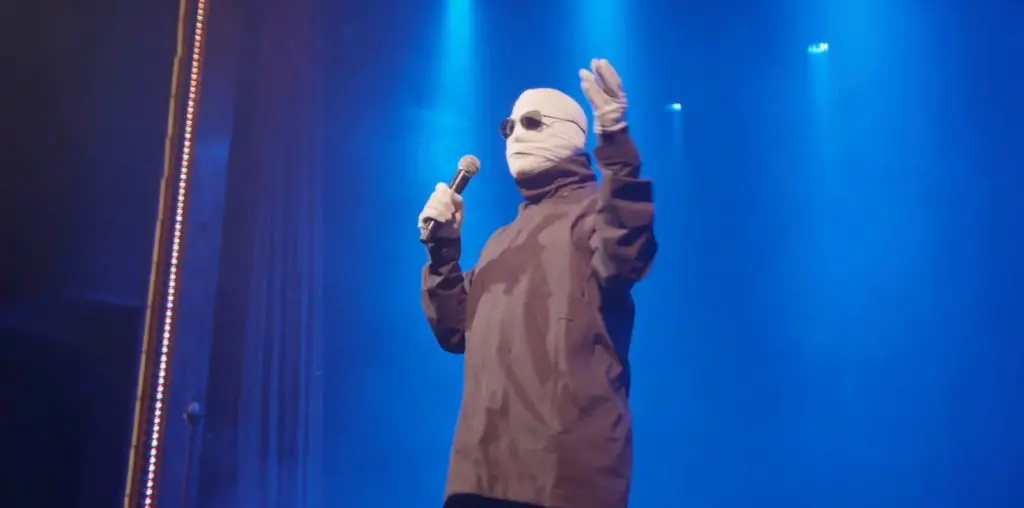
The story behind getting the prequel to The Exorcist (universally regarded as one of the finest and most frightening horror movies of all time) up on the big screen almost sounds like a movie itself. Morgan Creek Productions first tried to get John
Frankenheimer to helm the project. He pulled out after a year of pre-production.” Then Paul Schrader (“Affliction”) was approached, and made a movie that reportedly relied heavily on atmosphere and subtlety. This (big surprise) was not what producer James G. Robinson wanted at all. Schrader was fired, the finished project shelved, and a new director sought who could goose up the scare factor. Enter Renny Harlin (“Die Hard 2”), who added new characters, dropped old plotlines, and shot an entirely new film. The result is “Exorcist: The Beginning,” which opens in theaters today.
Harlin and company have pretty enormous shoes to fill. The original “Exorcist” is unsurpassed in the annals of horror cinema. The frights were plentiful, certainly, but what made the film powerful was the strength of characterization and the theological questions raised. Everyone remembers the pea soup, Linda Blair’s spinning head, and “Your mother sucks cocks in hell,” but the movie continues to freak us out because it raises questions not easily answered or tied up at the film’s end. I’ve often commented that “The Exorcist,” unlike almost every other horror movie I’ve seen, gets scarier as I get older. So how do you top that? Forget topping it, how do you match it?
In Harlin’s case, you give it the college try for about an hour, and then – apparently – you throw in the towel
After a disquieting introduction involving an ancient battlefield, a familiar demon statue, and scores of messily crucified soldiers, “Exorcist: The Beginning” moves to 1949 Cairo. Archaeologist Lankester Merrin (Stellan Skarsgård) meets with a shady Frenchman (Ben Cross) who asks Merrin to travel to East Africa and investigate the discovery of an early Catholic church built 1000 years before Christianity arrived in the region. Merrin, a hard-drinking former priest, is reluctant, but if movies have taught us anything about archaeologists, it’s that they can’t turn down the chance to dig up things that will most likely kill them. Before you can say “This is a warning not to disturb the Ark,” Merrin has traveled to Kenya, met the leader of the local British army garrison, picked up a young priest (who just happens to be sent by the Vatican to look into things), and is on his way to the dig site. There, he meets Sarah Novak, the local doctor (Izabella Scorupco) and Jeffries, the local drunk (Alan Ford), plus a bunch of other people who you’re pretty sure are going to end up dying. He also discovers the church in question is remarkably well-preserved, almost as if it was buried immediately after being built.
To this point, “Exorcist: The Beginning” actually shows some promise. Harlin builds palpable dread (tempered somewhat by Trevor Rabin’s oppressive score), and Skarsgård effortlessly captures Merrin’s dissipation and loss of faith (courtesy of a rather nasty atrocity involving the Nazis when Merrin was a priest in World War II). Narrative-intensive, the first hour or so of the film raises questions of faith and the nature of evil that give the audience a brief glimmer of hope. Sadly, that light is soon extinguished by tired horror movie gimmicks and a frankly ridiculous ending.
Admittedly, it’s refreshing to see an R-rated horror movie, but (as my grandmother used to say) disemboweled corpses and maggot covered babies can only get you so far. Rather than allow the dread to build or continue testing Merrin’s faith, Harlin resorts to cheap scares. All your favorites are here: the Appliance Suddenly Turning On, the Bird Flying Out of Nowhere, and my personal favorite, the Woman Unwisely Taking a Shower. After a series of side plots involving the local tribesmen and a “shocking” revelation about the Vatican’s involvement in the area, Merrin eventually confronts the demon Pazuzu, whose own ancient temple lies in the caves beneath the old church. But aside from the welcome return of the guttural demon voice we all remember so well and Merrin letting loose again with, “The power of Christ compels you,” the exorcism scene relies too heavily on poorly realized CGI and more of the cheesy scare tactics mentioned earlier. The climax, in particular, will likely have audiences laughing out loud.
I should clarify that the name “Pazuzu” is never actually mentioned in the film. Despite being described in the novel, the name was also left out of the first “Exorcist,” and we don’t actually hear it until 1977’s ill-advised “Exorcist II: The Heretic.” In fact, writer Alexi Hawley goes out of his way to propose another explanation for the presence of the ancient shrine (which nicely allows Harlin to avoid explaining what the hell a temple to a Sumerian deity is doing in modern-day Kenya). It’s convenient, but only serves to throw more kinks into the already convoluted continuity of the “Exorcist” series.
It’s probably just as well. “Pazuzu” sounds like a Pokemon character anyway.
Knowing the backstory, it’s impossible to watch “Exorcist: The Beginning” without thinking of what might have been. Schrader’s version may be released on DVD later this year, and it will be interesting to compare his product to Harlin’s. I can’t say whether the first half of “Exorcist: The Beginning” still bears Schrader’s imprint or Harlin just lost his nerve in the final act, but the end result is the same: a horror movie that starts off decently but quickly falls victim to cliché. It is, ultimately, a disappointing genre entry, and one that falls far short of the original’s greatness.
Disagree with this review? Think you can write a better one? Go right ahead in Film Threat’s BACK TALK section! Click here>>>
